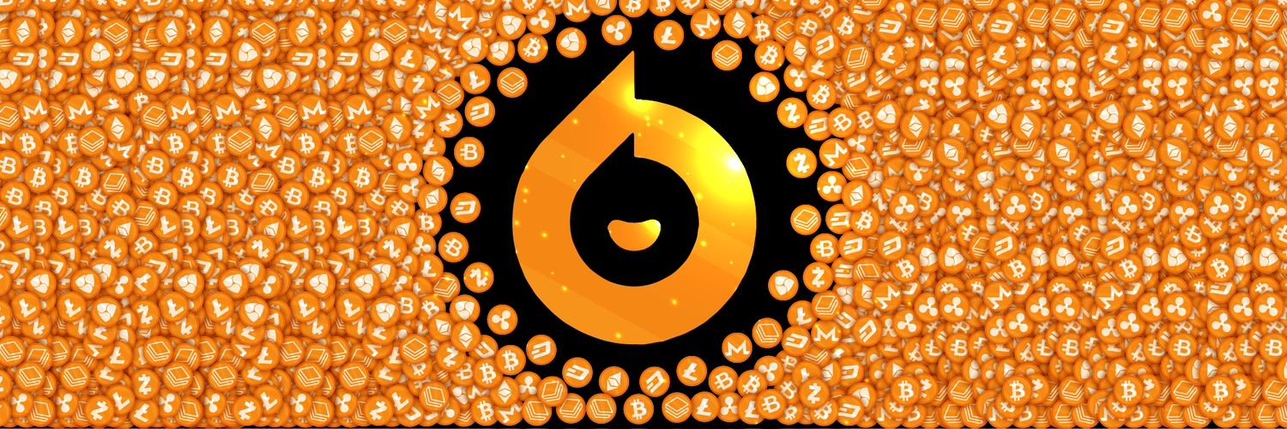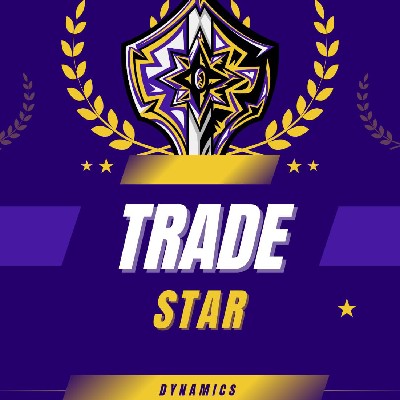
Cardano priceADA
ADA/USD price calculator
Cardano market Info
Live Cardano price today in USD
Do you think the price of Cardano will rise or fall today?
Now that you know the price of Cardano today, here's what else you can explore:
How to buy Cardano (ADA)?How to sell Cardano (ADA)?What is Cardano (ADA)What would have happened if you had bought Cardano (ADA)?What is the Cardano (ADA) price prediction for this year, 2030, and 2050?Where can I download Cardano (ADA) historical price data?What are the prices of similar cryptocurrencies today?Want to get cryptocurrencies instantly?
Buy cryptocurrencies directly with a credit card.Trade various cryptocurrencies on the spot platform for arbitrage.Cardano price prediction
When is a good time to buy ADA? Should I buy or sell ADA now?
What will the price of ADA be in 2026?
In 2026, based on a +5% annual growth rate forecast, the price of Cardano(ADA) is expected to reach $0.5399; based on the predicted price for this year, the cumulative return on investment of investing and holding Cardano until the end of 2026 will reach +5%. For more details, check out the Cardano price predictions for 2025, 2026, 2030-2050.What will the price of ADA be in 2030?
About Cardano (ADA)
What Is Cardano?
Cardano (ADA) is the third-generation blockchain that utilizes Proof-of-Stake (PoS) consensus mechanism. Introduced in 2015 by Ethereum co-founder Charles Hoskinson, the project is the product of extensive experimentation and scientific theory. Cardano is unique in the sense that it's the first blockchain project to be developed from a scientific philosophy, built by a team of expert engineers and academics from all over the world. Cardano aims to achieve the most balanced and sustainable ecosystem that will enhance society’s interaction with digital assets.
Following a tremendously successful Initial Coin Offering (ICO) in 2015, the Cardano mainnet was launched two years later. As of now, Cardano supports an array of use cases and applications, including smart contracts, decentralized finance (DeFi), the Internet of Things (IoT), and non-fungible tokens (NFTs). As of July 2023, it holds the 14th position among global blockchains in terms of Total Value Locked. Cardano is also recognized for its pioneering research-oriented approach. It has made significant contributions to the academic world, publishing numerous peer-reviewed papers and collaborating with top universities for blockchain-related education and research.
The development of Cardano is systematically segmented into five primary stages in its roadmap. The first stage, Byron, served as the foundation of the project, marking the official launch of Cardano's mainnet, along with two wallets and a Block Explorer. The next stage, Shelley, focused on decentralization. It enhanced the staking operation, refined delegation preferences, and offered greater incentives for users. Following Shelley, the Goguen phase was introduced, which aimed to enable everyone to build decentralized applications (dApps) and generate their own tokens. The upcoming phase, Basho, is set to enhance scalability and interoperability by optimizing the underlying performance of the network. The final stage, Voltaire, will empower the community to have a voice in Cardano’s future development through decentralized voting mechanisms.
Resources
Whitepaper: https://docs.cardano.org/introduction/
Official website: https://cardano.org/
How Does Cardano Work?
The Two-Layer Architecture
At the heart of Cardano's functionality is its unique two-layer architecture, designed to separate the ledger of account values from the reason why values are moved from one account to the other. This structure comprises the Cardano Settlement Layer (CSL) and the Cardano Computation Layer (CCL).
The CSL handles ADA transactions and ensures that they are secure, quick, and direct. The CCL, on the other hand, is responsible for the computational part. It handles the execution of smart contracts and houses decentralized applications (dApps). This bifurcation ensures that changes made to the smart contract execution policies do not interfere with the performance of the underlying blockchain.
Proof of Stake
Cardano employs a unique proof-of-stake (PoS) consensus algorithm known as the Ouroboros protocol. Unlike the proof-of-work (PoW) system used in platforms like Bitcoin, which requires massive amounts of energy, PoS is a far more sustainable and efficient alternative. In the Ouroboros system, 'stake pools' or validators are selected to create new blocks based on the number of ADA tokens they hold and are willing to 'stake' as collateral.
Cardano's Governance Model
The way decisions are made on Cardano is also distinct. Project Catalyst, Cardano's innovative governance model, allows ADA holders to propose and vote on changes to the platform. This level of direct involvement promotes transparency, inclusivity, and the long-term sustainability of the blockchain platform.
What is ADA?
The native cryptocurrency of Cardano is ADA, named after Ada Lovelace, a 19th-century mathematician often credited as the first computer programmer. ADA is used for transaction fees to prevent network spam, stake in the network as part of the PoS consensus mechanism, and eventually, to vote on protocol changes in Cardano's on-chain governance.
Cardano's Vasil Hard Fork Upgrade
The most recent upgrade, Cardano's Vasil Hard Fork Upgrade, was completed on September 22, 2022. It introduced a major upgrade to Cardano's smart contract language, Plutus v2. This upgrade aims to boost the scalability of Cardano's decentralized applications, reduce transaction costs, and increase transaction speed. The Vasil upgrade could prove beneficial for DApp developers and stimulate growth in the broader crypto ecosystem. However, despite these improvements, Cardano still faces stiff competition from faster-developing blockchain platforms. To secure its position, Cardano must accelerate its pace while maintaining high-quality outputs.
What Determines ADA's Price
Understanding the factors that influence the ADA price is crucial for both investors and enthusiasts in the cryptocurrency market. The Cardano ADA price today is shaped by a myriad of elements, ranging from technological advancements to market sentiment.
Cardano's Unique Technology and its Impact on ADA Coin Price
Cardano's unique proof-of-stake consensus mechanism, Ouroboros, sets it apart from energy-intensive proof-of-work systems. This contributes to its overall value and, consequently, to the Cardano market cap. The platform's smart contract capabilities make it a fertile ground for decentralized applications (dApps), further driving the ADA coin price.
Compliance and Partnerships: The Cornerstones for ADA Price Prediction 2023 and 2024
Additionally, Cardano's compliance with evolving regulatory landscapes and its strategic partnerships can positively affect its future price, making ADA price prediction 2023 and 2024 a topic of keen interest.
The Role of Market Sentiment in Current ADA Price
Market sentiment plays a pivotal role in determining the current ADA price. Positive news, such as successful project milestones or key partnerships, can boost investor confidence, leading to an upward trend in the ADA trading price. Conversely, negative news can impact the ADA price chart and ADA price history.
How Community Support Influences ADA Price Live
The ADA price live is also influenced by community support, which is a testament to Cardano's decentralized nature. Community-driven initiatives can contribute to Cardano's success and, by extension, its value, making ADA to USD conversions more favorable for investors.
Technical Indicators and ADA Price Forecast
Technical indicators, such as the ADA price chart and ADA price USD, offer insights into market dynamics. The ADA price forecast can be influenced by trading volumes, market capitalization, and price movements. Tools like sentiment analysis and social media mentions provide valuable data for Cardano price analysis.
Industry Trends and their Impact on ADA Crypto Price
Moreover, broader industry trends, such as the adoption of blockchain technology and cryptocurrencies by governments and institutions, can significantly impact the ADA crypto price.
Whether you're looking to buy Cardano ADA or are interested in ADA price predictions, understanding these factors can offer a more comprehensive view of Cardano's financial landscape. By keeping an eye on these variables, investors can make more informed decisions, whether they're looking at the ADA price live for short-term gains or are interested in Cardano ADA future price for long-term investments.
Conclusion
Cardano offers a compelling vision of a blockchain platform that is secure, sustainable, and governed by its community. With its unique two-layer architecture, Ouroboros protocol, and a strong commitment to research and peer-review, Cardano stands at the forefront of the next generation of blockchain platforms. As it moves forward on its development roadmap, Cardano continues to capture global attention, driving the digital finance revolution one block at a time..
Related Articles about Cardano
Bitget Insights




ADA/USD price calculator
ADA resources
Tags:
What can you do with cryptos like Cardano (ADA)?
Deposit easily and withdraw quicklyBuy to grow, sell to profitTrade spot for arbitrageTrade futures for high risk and high returnEarn passive income with stable interest ratesTransfer assets with your Web3 walletWhat is Cardano and how does Cardano work?
Global Cardano prices
Buy more
FAQ
How does staking influence Cardano's price?
Can I mine Cardano (ADA)?
Is Cardano a good investment?
How does market speculation impact the price of Cardano (ADA)?
Will Cardano (ADA) reach US$100?
What is the history of Cardano's price?
What is the current price of Cardano (ADA)?
What factors influence the price of Cardano?
How has Cardano's price changed in the last 24 hours?
Will Cardano's price go up in the future?
Where can I buy Cardano at the best price?
Is Cardano a good investment at its current price?
What is the all-time high price of Cardano?
How do I convert my ADA to USD or other currencies?
What is the market capitalization of Cardano?
How does Cardano's price compare to other cryptocurrencies?
What is the current price of Cardano?
What is the 24 hour trading volume of Cardano?
What is the all-time high of Cardano?
Can I buy Cardano on Bitget?
Can I get a steady income from investing in Cardano?
Where can I buy Cardano with the lowest fee?
Related cryptocurrency prices
Prices of newly listed coins on Bitget
Hot promotions
Where can I buy Cardano (ADA)?
Video section — quick verification, quick trading









